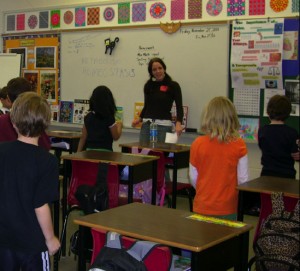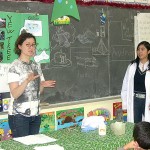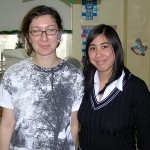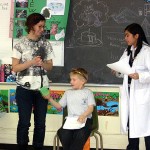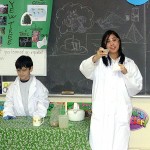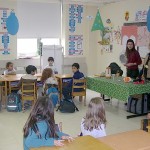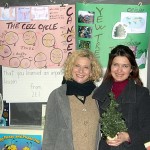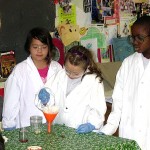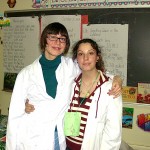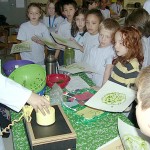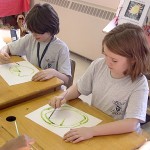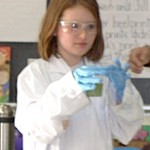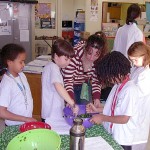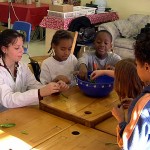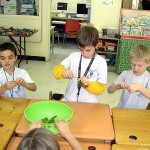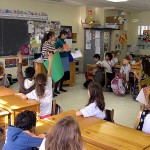Anethol
October 11, 2011 in Plants
On Wednesday, November 26th, 2008, the students in Mrs Shuster’s third grade class at École F.A.C.E. School continued to extract natural products from plants as university students Elisabeth Nguyen (B.Sc., U. Montréal) and Nina Pariser (BA Art Education, Concordia U) presented the molecule of the day “anethol” from the seeds of the anise plant. In an interactive discussion, Elisabeth and Nina explained that anise is one of the oldest spice plants for culinary and medicinal purposes. Anise was used in Egypt as early as 1500 B.C. To aid digestion the Romans enjoyed anise-spiced cakes, and even the Bible mentions that tithe was sometimes paid with anise.
Starting by pretending to have sore throats and stomach aches, Elisabeth and Nina sparked a discussion on what kinds of treatments the students use when they are feeling such ailments. They then described how tea from the anise plant contains anethol which has been shown to relieve sore throat and aching stomach conditions. The students were given samples of anise seeds and asked to describe their smell. Subsequently, they were refreshed on the issues of laboratory safety, and aided by a volunteer, Elisabeth performed an extraction of anise seeds with hot water, a technique with which the students had now considerable experience. Passing the tea around, the students recognized the smell of licorice which derives its taste from anise. Nina then discussed other facts about anise and anethol, such as their use to poison pigeons and the fabled use of an anise seed under your pillow to prevent nightmares. Eventually, the discussion turned to the use of anise to relieve oneself of flatulence, a useful term for the students to describe something for which their vocabulary may have been deficient. To refresh these concepts, the students performed “Anethol” the play.
Scene one, the king of ancient Egypt awakes feeling hungry, complains about the strange flowers of anise that he does not like in his garden and demands his cooks to make him something to eat. The cooks, who are inspired by an evil talking pigeon, prepare the king bean chili, which the King eats in Scene two, resulting in his suffering of a bout of flatulence. In Act two, the doctors are unsuccessful in ridding the king of his flatulence using different remedies, yet suggest that the king summon Anethol, who knows the ways of the herbs and who holds the secret for relieving flatulence. Anethol who is brought in as a prisoner refuses to aid the king until he is calmed by the doctors and consents by telling the king to gather up the seeds of the plants that he detests and prepares a tea from the anise seeds. The king is relieved, names the plant Anise a royal treasure and the tea Anethol in honor of his new advisor and healer “Anethol”. All but the pigeon lived happily ever after.
Although not quite ready for Broadway, the play was a great success and well loved by the performers and audience, who profusely thanked Team Anethol and cheered for more MLPs next semester.


